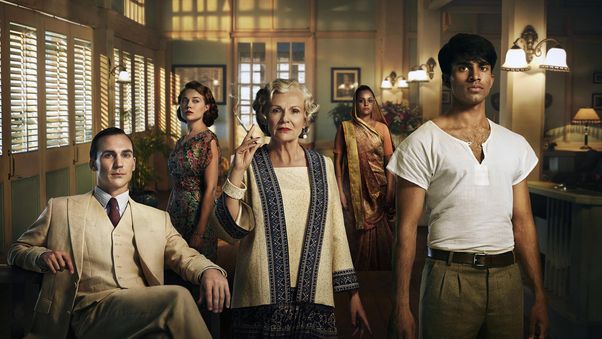I am not an intelligent man, nor handsome, sensible or even pragmatic. I’ve never been popular or well known; often reminding people of my name and what I do as they easily forget who I am. Finding me in a myriad of faces is virtually impossible and trying to distinguish my age and ethnic origin, at my age, is tiring. And while some of these issues might make one feel insecure or self conscious, it makes me rather comfortable to know my actions are neglected, or overlooked, and thus never interrupted. I may not be a lot of things, I am, however, exceedingly curious. Inspired by human achievements and ambitions and intrigued by its failures, movements and ignorance. I am a voyeur of details.
My curiosity spawned in spring of 2005. I had started a new post at the Science Museum and having never explored South Kensington, one of the most affluent boroughs of London, I began to take a series of walks during my lunch breaks. One particular afternoon was spent in the Victoria and Albert Museum. The east wing contained the Cast Courts, housing dozens of reproductions of sculptures in Europe from ancient times. The courts most impressive piece was the Trajan column from Rome. What struck me most was not its size but the frieze – a visual, storytelling method which spiralled around the column. It contained scores of men, horses, spears, shields, boats and fighting sequences representing two battles fought by the emperor of the time – Trajan. I would’ve missed the brilliant craftsmanship had I not decided to take a closer look. This wonderful insight took me further and deeper into the history of ancient Rome, the expansion of its empire, its theological significance, its inspiration for art and literature. I found myself enlightened. I felt illuminated. Primed.
I was 23 years old. I had some interest in writing but no real experience to draw upon. All I knew for sure was that I wanted my work to have copious layers so it could be read in numerous ways. I began to work on my three principles:
The premise (Purpose): Boy meets girl. Father greets his prodigal son. Man reads to his dying wife, etc. The premise would be simple and underlines the tone of the story being told. Even epics such as the Iliad has a simple premise – one man attempts to reclaim his stolen wife. It just so happens he’s bringing a thousand ships with him.
Poetic rhetoric (Structure): ‘The sun makes a cameo appearance through charcoal dipped clouds’. ‘The flames in the majestic fireplace waver tumultuously’. ‘The morning sun’s rays filtered through the labyrinth of marble headstones, concrete angels and ornamental obelisks’. Examples from my short stories. I try to create and bring life to still and inanimate objects. It is what binds the story together.
Accessories (Details): While the foreground allows the premise to evolve with my characters, the background has subtle clues to supplement my story. The city the action takes place in, the clothes they wear, the year and time of the story, the weather representing the mood – all of it is trying to make an impression, but never in a forceful manner.
Perhaps it’s too much to ask from the reader. To dig deeper in the psychosis of not just the characters and plot but to the environment they are set in. Would it really matter if readers didn’t understand it all? Would it make a difference? Does it need to be dissected and discussed? In my personal opinion, if such elements aren’t included I wouldn’t classify them as good literature. A fine, engaging read – yes. A piece of literature – perhaps not. An example can be found in the Matrix trilogy by the Wachowski brothers. Okay, so it’s a film, but it’s something a lot more people would have seen and it illustrates my point wonderfully. It is one of the most important, profound and epic piece of storytelling the modern world has recently created. A lot of the film critics and audiences loved the simply premise of the first installment but the intrinsic metaphors, philosophical dialogue and religious connotations in the latter parts were too much to absorb. I remember watching the third film for the first time and feeling so overwhelmed by the notion that mankind can both be a destructive force and its own salvation. Did you ever notice that the Oracle wears a ying-yang pair of earring symbolising Neo (the one) to Agent Smith (the many) Did you notice perhaps when you see the real world, it has a blue tint (reflecting the colour of water, the basis of life) but in the Matrix it’s green (reflecting the colour of text from old PC’s)? You probably didn’t notice what the Matrix itself represented. I think it symbolises human ignorance. How it destroys all man has ever created and can only defend itself through hope. The remaining item in the box Pandora opened. This is of course one understanding of the film. I am certain there are many. And if a medium allows one to reflect and refract humanity back to us, surely its level of appreciation should be high. It is of course a difficult film to understand but that should only encourage us to discover and learn a little more.
And so I end my first post with where I stand today. I write not because I want to tell stories for people to read, but for me to enjoy for myself. If people like it, that’s great. If they don’t, then that’s okay too. I sometimes find I sub-consciously infuse certain elements of my own persona in my characters and choose settings where I had an epiphany many years ago. Am I subtly telling people about me in my stories? Possibly. But I would never use myself as a protagonist. That would be too easy. While the world passes me by I can instead focus and observe its intricacies. In its shadows I will be there. Watching. Enviously. Pitifully. Patiently.

